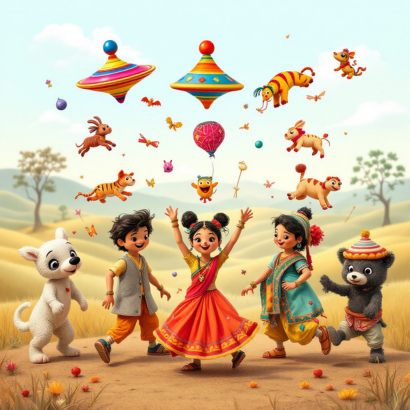A quiet revolution is brewing in India’s toy industry — and it’s nothing short of a game-changer. With the United States rolling out steep tariffs on toy imports from China and Vietnam, Indian manufacturers suddenly find themselves in a position of remarkable opportunity.
A Golden Moment for Indian Toy Exporters
China and Vietnam, the dominant players in the global toy export market, are now grappling with U.S. tariffs as high as 54% and 46% respectively. Meanwhile, India faces a comparatively modest 26% tariff, which has given local exporters a strong competitive edge.
While these numbers might just seem like policy shifts on paper, for Indian toy manufacturers, this could mean the start of something big. With China’s toy exports valued at a staggering $80 billion and Vietnam’s at around $6 billion, even capturing a small portion of that market could be a massive win for India. Industry veterans are already sensing the winds of change. Indian toy exports, which hovered between $326 million and $348 million over the last three years, are now expected to surge as global buyers look for reliable alternatives to traditional supply chains.

Policy Push and State Support
India isn’t going into this alone. Several Indian states — including Karnataka, Madhya Pradesh, Odisha, Bihar, and Haryana — have stepped up with industry-specific policies designed to attract investment, support manufacturing clusters, and encourage exports.
The government’s National Action Plan for Toys has also created a strong foundation, offering guidance and infrastructure support to help local manufacturers meet international quality and safety standards.
Strategic Partnerships and Modernization
Indian manufacturers aren’t just ramping up production — they’re collaborating with international partners to enhance design, technology, and production capabilities. The spotlight is especially bright on wooden toys, soft toys, and eco-friendly alternatives, where India can showcase its traditional craftsmanship and sustainable approach.
These partnerships aren’t just about scaling up — they’re about creating world-class products that reflect a blend of culture, creativity, and compliance.
Challenges Ahead, but the Road Looks Bright
Of course, this boom isn’t without its challenges. Infrastructure, supply chain consistency, global branding, and meeting stricter export standards are hurdles the industry must leap. But with the right investments — not just in machinery but in people, design thinking, and quality assurance — the Indian toy sector can carve a permanent space on the global stage.

Looking Forward
As global markets reconfigure and trade routes get redrawn, India’s toy industry is no longer playing catch-up — it’s ready to lead. This moment is about more than filling a gap. It’s about transforming the perception of Indian toys from “low-cost” to “high-quality,” from “locally known” to globally trusted. For an industry rooted in creativity and joy, the timing couldn’t be more perfect. The world’s biggest toy shelves might soon carry a lot more labels that say “Made in India.”


